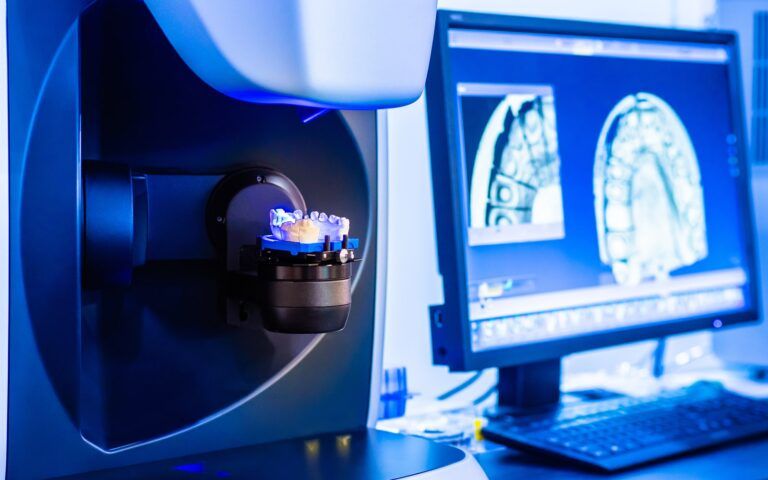Digital Imaging and Virtual Planning In Dentistry

The advance of dental technology has significantly impacted how physicians provide care. While dental health standards have changed over time, and new treatment methods have been introduced, the underlying technology makes the most significant difference. Among these technologies, it’s quite possible that dental imaging is the most important in terms of recent innovations. Using advanced digital imaging and virtual planning, your dentist can better deliver the care you need safely, quickly, and effectively. We will explore how these technologies have significantly influenced how your care is delivered.
Digital Imaging and Virtual Planning
Due to the complex nature of our oral cavity and health, your dentist needs to be able to visualize these areas in a variety of ways. The external tissues and structures can be viewed with the naked eye or with a hand-held imaging device. This device has a camera on the end of a short boom and looks like an electric toothbrush. Using this camera and the accompanying light, a 3D image of your visible tissues can be rendered for diagnosis and visualizing treatment results.
In addition to viewing the external tissues and structures, the bones, roots, and other hidden areas need to be made visible. In the past, this was accomplished with X-ray technology. While x-rays are still used, digital films have replaced traditional films that use significantly less radiation than traditional x-ray technology. Despite the notable reduction of radiation, the resulting images are of higher quality and are converted into a 3D digital format. This ensures your dentist has the best possible view of any concerns, making it an invaluable tool for diagnosis and treatment planning.
The treatment of the following oral health concerns has been improved with this technology:
- Decay hidden between the teeth
- Decay that is concealed by existing fillings
- Bone loss occurring in the jaw
- Root canal and bone resulting from infections
- Precise identification of tooth positions
- Tumors, cysts, abscesses
- Crowding of incoming teeth
- Development of impacted teeth, including wisdom teeth
These imaging methods have made the diagnosis of oral health concerns significantly easier. Further, the development of comprehensive treatment plans has been made more accessible and more thorough. In patients of all ages developing, concerns are easier to catch early, allowing dentists to take action before they become more serious.
Virtual planning is another benefit of these new imaging technologies. The term virtual planning describes a process by which the patient and the dentist can clearly see the treatment’s potential outcomes. Before the day of the appointment, they’ll be confident that their chosen treatment will produce the results they’re hoping for.
Consult Your Dentist for Further Information
The ongoing development of dental technology ensures that each year brings new wonders to oral health care. Please communicate with your dentist to learn which technologies are available in their clinic and what new upgrades they’re planning. They’ll let you know how these technologies have influenced your care and how you benefit at every visit.

Recent Comments